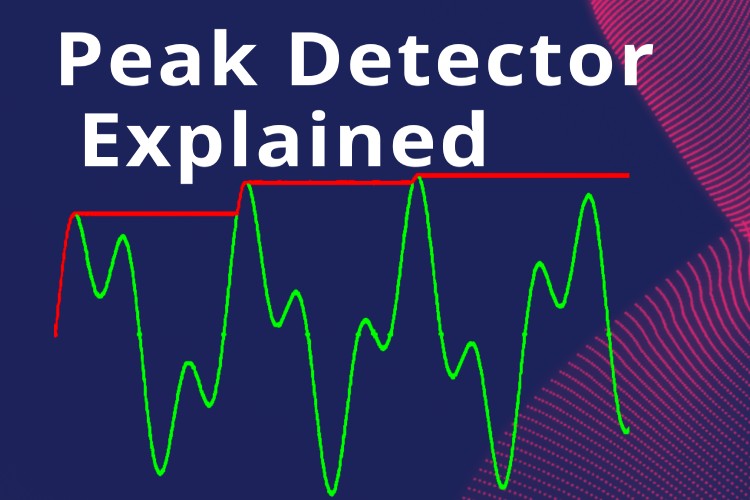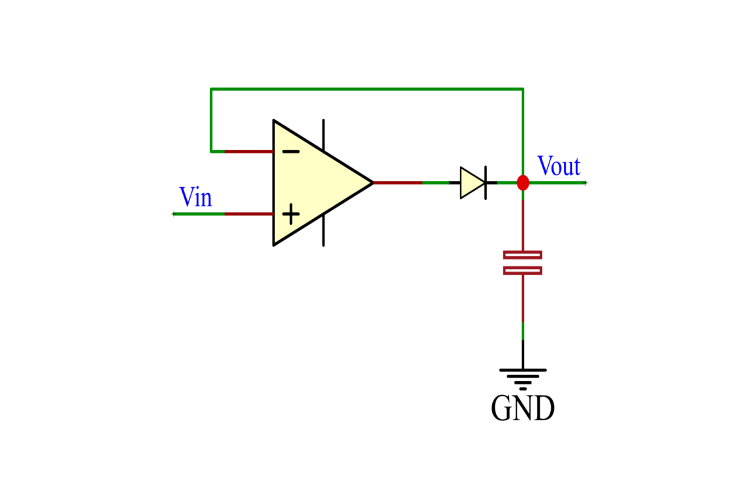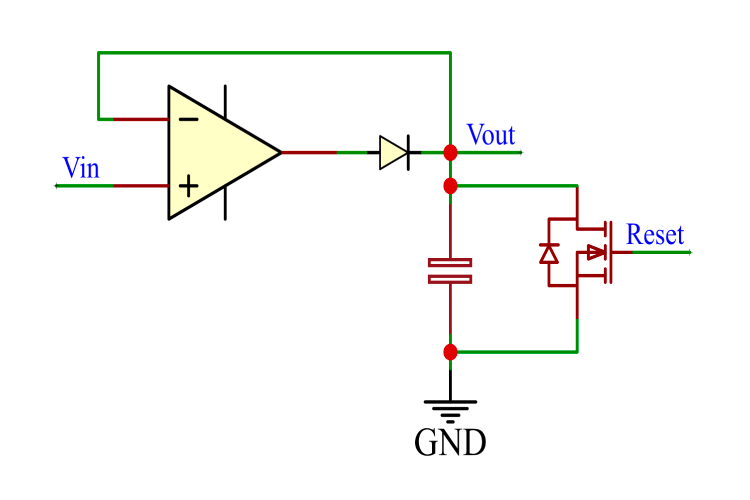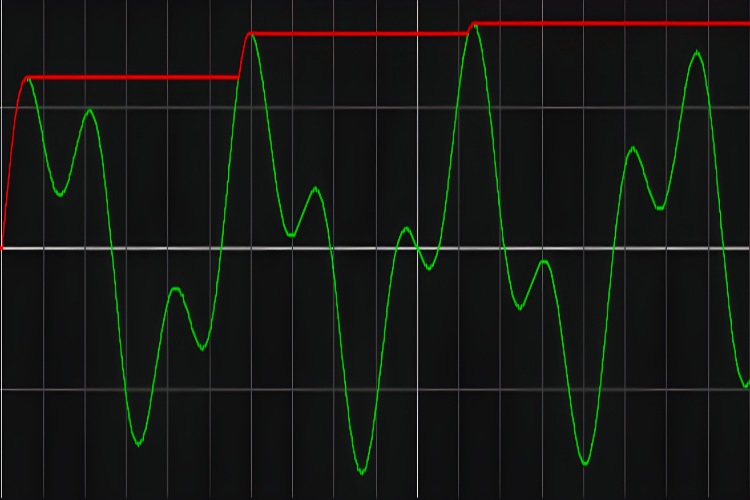Optimized at frequencies beyond traditional industry targets to support emerging applications
Peak Detectors - How does it work and How to build one using Op-Amp?

What is a Peak Detector?
If you look into the peak detector definition, a Peak detector is a circuit which is used to determine the maximum peak or the maximum peak of a signal. In this article, we'll look into what a peak detector is, how it works, and its key components, and explore its applications, with a particular focus on peak detectors using operational amplifiers (op-amps). This circuit is essential in scenarios where you need to measure the maximum value of a signal over a certain period.
How does a Peak Detector Circuit Work?
A typical peak detector circuit consists of key components such as diodes, resistors, and capacitors. Let's break down its operation step by step:
Input Signal: The peak detector starts by receiving an input signal, which could be any time-varying waveform.
Charging Phase: During the charging phase, the input signal passes through a diode, allowing it to charge a capacitor through a resistor. The capacitor gradually charges up to the peak voltage of the input signal.
Holding Phase: Once the capacitor reaches the peak voltage, it holds this voltage level, effectively "memorizing" the peak value.
Output: The voltage across the capacitor is the peak detector output. It retains the highest voltage level reached by the input signal during the charging phase.
Types of Peak Detectors
Depending on the polarity of the detected peak, there are different types of peak detectors:
- Positive Peak Detector: Captures the positive peak of the input signal.
- Negative Peak Detector: Captures the negative peak of the input signal.
- Peak-to-Peak Detector: Captures both the positive and negative peaks of the input signal.
Peak Detectors Modes of Operation
A peak detector can be operated in two modes, real-time peak detection mode and sampled peak detection mode. In real-time peak detection mode, the peak detector processes the input signal in real time and reacts instantly to changes, making it suitable for applications where a timely response is critical. In samples peak detection mode, the peak detector takes samples of input signal in a set interval and then processes it and detects the peak value, reducing the complexity and power consumption at the expense of a slightly delayed response.
Peak Detector Circuit
A basic peak detection circuit comprises components like diodes, resistors, and capacitors. Here is the simplest ever peak detector circuit using just a diode, capacitor and resistor.
An operational amplifier (op-amp) can be incorporated into a peak detector circuit to enhance its performance. The op-amp-based peak detector offers higher precision and faster response times. The op-amp acts as a buffer and improves the stability of the circuit. Here's a simplified diagram of a Peak detector using an op-amp, you can also check out this article on peak detector using op-amp to know more.

When an input signal is applied to the circuit, the capacitor gets charged through the diode, until it reaches the peak voltage. The new peak value is stored in the capacitor until it is discharged. If we consider the capacitor is initially charged to voltage Vout, we will use the term Vout since the capacitor voltage and the output voltage are the same. The diode in the circuit gets forward-biased when the applied input voltage Vin exceeds the capacitor voltage Vout. Thereby allowing the circuit to behave as a voltage follower. The output voltage follows the applied input voltage until Vin is more than Vout. As the input voltage Vin reduces below the value of capacitive voltage Vout, it causes the diode to get reverse biased. In such a condition, the capacitor retains the value until the input again exceeds the value stored in the capacitor. Whenever the input voltage Vin exceeds the current peak voltage Vout, the diode will again get forward biased and the capacitor gets charged to the new peak voltage. Effectively setting the output voltage to the Peak. Here is a simulation showcasing the same. In the simulation, you can see that when the peak voltage of the input signal increases the output also changes. In the simulation, you can also see an additional opamp at the output. It acts as a buffer between the peak detector and the output, and it will improve the recovery time for the peak detection.
Resetting Peak Detector
As we know a peak detector will hold the peak value until it is reset or powered down. The easiest way to reset a peak detector is to drain the capacitor with some kind of a switch. The image below shows such a peak detector circuit with an opamp featuring a reset mechanism.

Here you can reset the peak detector by providing a reset signal to the MOSFET. It will turn on the MOSFET and discharge the capacitor. If you want to manually reset the detector without a signal, you can simply replace the MOSFET with a switch.
Peak Detector Waveform
The below image shows the input and output waveforms of a peak detector. The input signal is illustrated in green colour and the output waveform is in red. As you can see whenever the input signal exceeds the last peak value the output waveform increases in amplitude and holds to that value until a new higher peak is peered in the input.

An operational amplifier (op-amp) can be incorporated into a peak detector circuit to enhance its performance. The op-amp-based peak detector offers higher precision and faster response times. The op-amp acts as a buffer and improves the stability of the circuit.
Peak Detector ICs
For those looking for a ready-made solution, some dedicated ICs are available specifically designed for peak detection applications. These ICs offer convenience and reliability, making them suitable for a wide range of industries. One of the popular peak detector IC is the PKD01 from Analog Devices.
Peak Detector Applications
Peak detectors find applications in various fields, including:
- Audio Processing - In audio applications, peak detectors help measure the peak amplitudes of audio signals, which is crucial for maintaining signal quality and preventing distortion.
- RF Communication - Peak detectors are used in radio frequency (RF) communication systems to capture and maintain the peak envelope of amplitude-modulated signals, ensuring efficient data transmission.
- Radar Systems - In radar technology, peak detectors assist in processing and extracting critical information from radar return signals, improving target detection accuracy.
- Medical Instruments - Peak detectors play a role in medical instruments, where they help analyze physiological signals such as ECG and EEG waveforms to detect abnormal peaks and patterns.
In conclusion, a peak detector is an essential circuit used to capture the highest points of a waveform. It finds applications in various fields, including audio processing, RF communication, radar systems, and medical instruments. By utilizing operational amplifiers and specialized ICs, peak detectors have become an indispensable tool in modern electronics, ensuring accurate peak amplitude measurement for improved performance in diverse applications.









